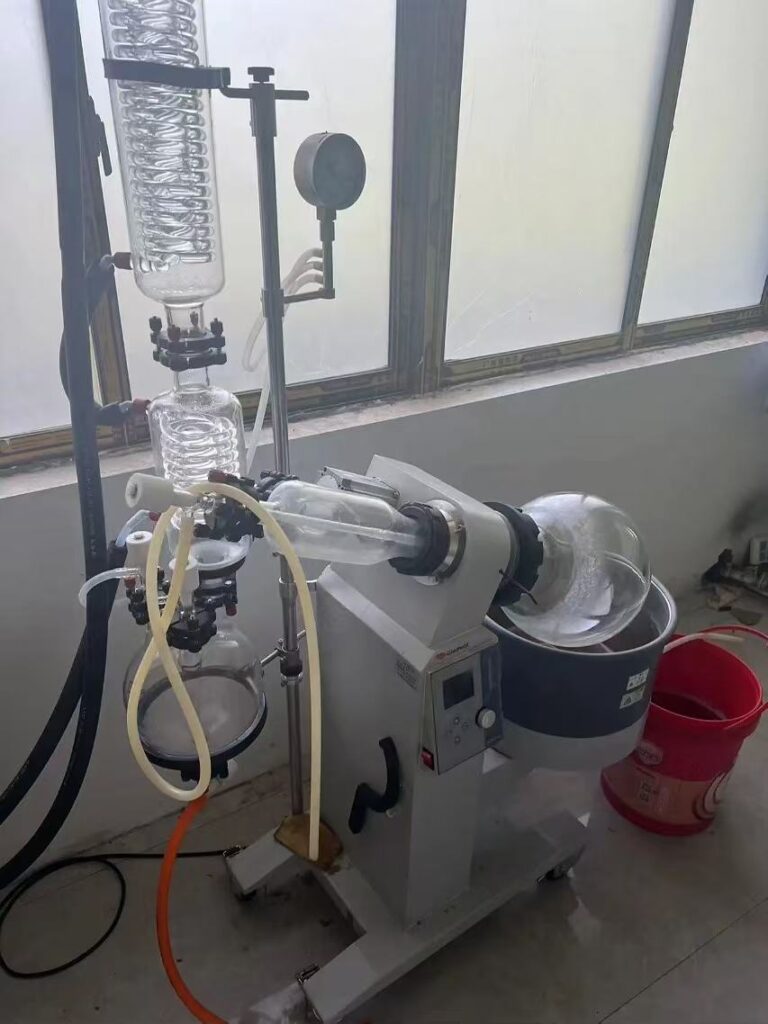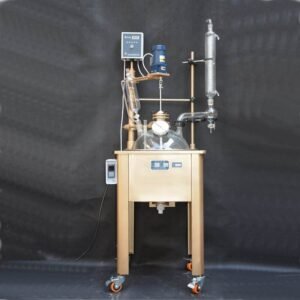Solvent distillation is a common and critical process in chemical experiments, especially when dealing with volatile solvents. The rotary evaporator, thanks to its unique working principle and excellent performance, has become an indispensable tool in many laboratories. In this article, we will explore how to use a rotary evaporator for solvent distillation, as well as its practical applications in the lab.

The Working Principle of a Rotary Evaporator
A rotary evaporator works by rotating a flask containing the solvent while applying heat and vacuum conditions to promote evaporation at a lower temperature. This method avoids the potential damage to sensitive materials caused by high temperatures. The solvent vapor then condenses through a cooling coil and is collected in a separate flask, thereby enabling the separation and concentration of the solvent. Compared to traditional distillation methods, the rotary evaporator not only enhances distillation efficiency but also reduces solvent loss during the evaporation process.
How to Use a Rotary Evaporator for Solvent Distillation
Using a rotary evaporator for solvent distillation is relatively straightforward, but proper operation is key to ensuring a successful experiment. Start by selecting the appropriate evaporation flask and solvent volume, based on the specifications of the rotary evaporator and the nature of the solvent. The ideal temperature range for solvent distillation is usually from room temperature to 180°C, while the rotation speed can be adjusted according to experimental requirements.
Once the setup is complete, ensure that the condenser is properly connected. The condenser should have sufficient surface area to efficiently cool the solvent vapor. After this, activate the vacuum pump to reduce the pressure and lower the boiling point of the solvent, allowing evaporation to occur at a lower temperature and preventing damage to the solvent. The condensed solvent is then transferred through the tube into the collection flask. The entire process may take some time, depending on the solvent volume and the evaporation rate.
Key Considerations
When operating the rotary evaporator, it’s important to adjust the temperature, rotation speed, and vacuum pressure appropriately. Additionally, ensuring the stability and safety of the equipment is essential. For instance, avoid setting the rotation speed or temperature too high to prevent the solvent from evaporating too quickly or damaging the equipment. Before and after use, check all connections to avoid leaks or potential accidents.
Application Case Study
In a pharmaceutical experiment, a company was extracting essential oils from plants using a rotary evaporator. They successfully removed large volumes of solvent from the plant extract while preserving key medicinal components. By adjusting the temperature and rotation speed, the company was able to efficiently recover the solvent and minimize production costs, all while maintaining the purity of the final product. The rotary evaporator played a significant role in this process, increasing efficiency and reducing operational costs.
Choosing the Right Rotary Evaporator
When selecting a rotary evaporator, it is important to choose a model that meets the specific needs of your experiment. For example, the AKR-1010 New Type Rotary Evaporator, with its precise temperature control system, large evaporation capacity, and efficient condensation system, is widely used in various fields. For experiments requiring large-scale distillation or high-precision operations, the AKR-1010 offers excellent performance and reliability. To learn more about this product, visit its product page.
This article demonstrates the significance of the rotary evaporator in solvent distillation and how to operate it for optimal results. If you’re looking for a reliable and efficient distillation solution, consider the recommended product and explore the video demonstration for more tips and usage insights.



